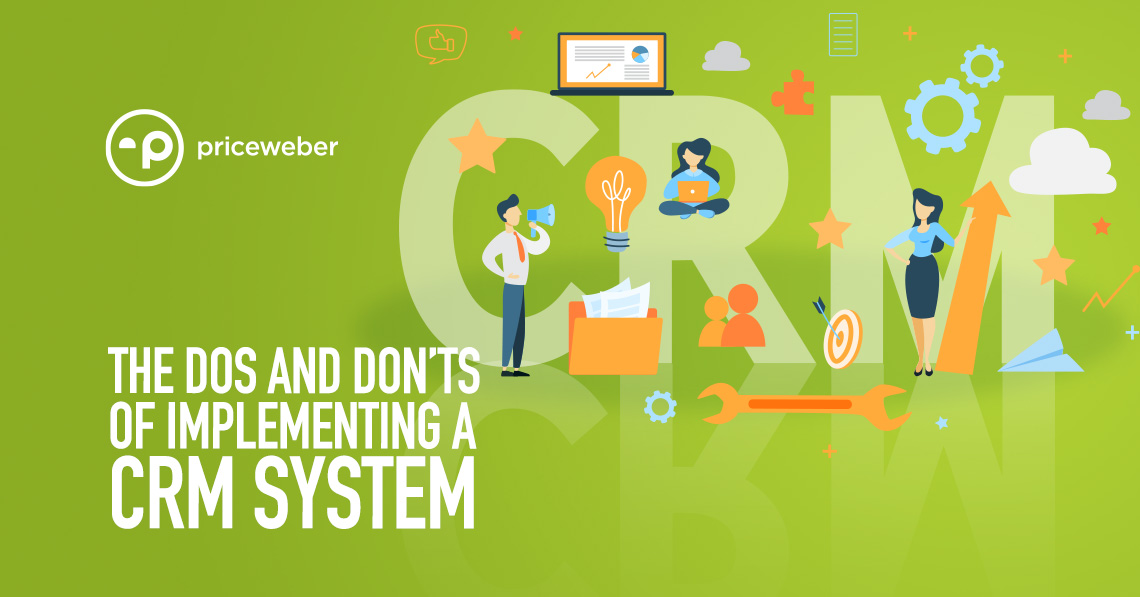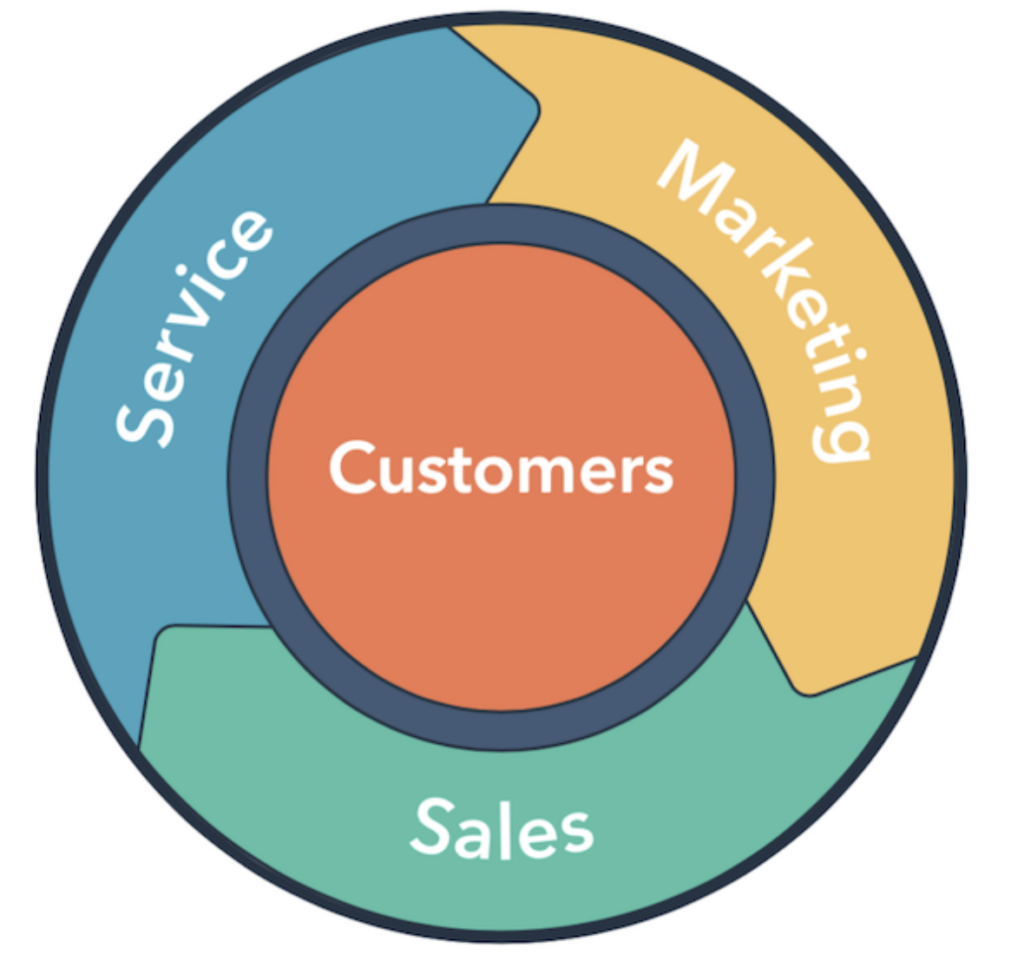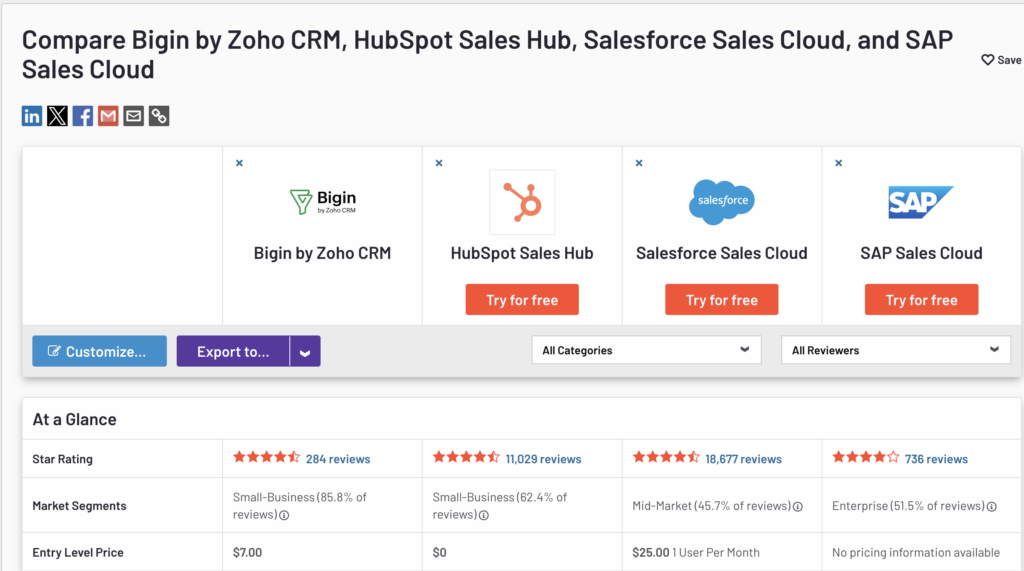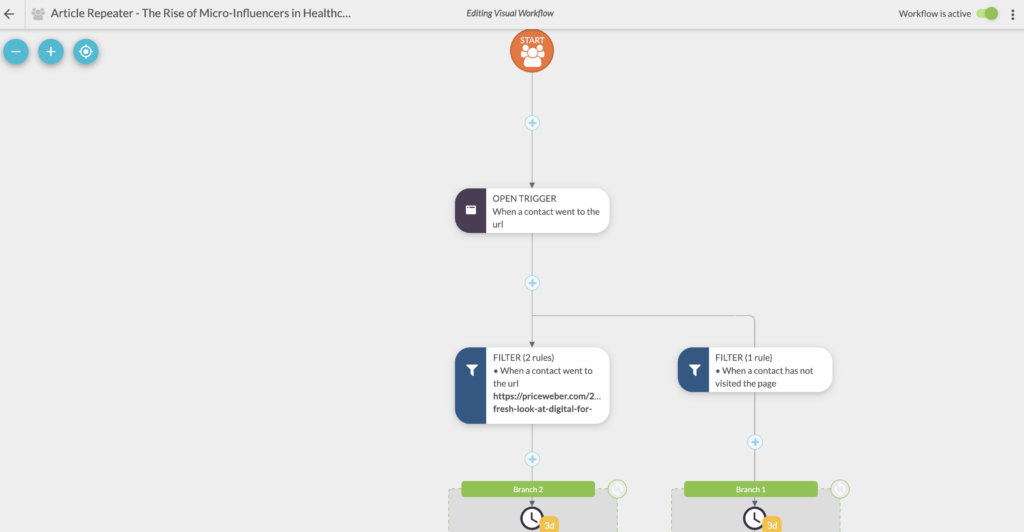As a full-service agency with more than 80 clients, we often get asked our opinions on which CRM solution is best for a given client’s situation or if a certain CRM software is any good. While we have our favorites and can often provide insights on which is best for a client’s needs, the answer is they are all pretty good. The secret to getting results from your new CRM is in its implementation! In this edition of Plain Talk, we’ll discuss the right way to implement a CRM system, including:
- What is a CRM, and Why Implement One?
- Getting Buy-In – Surveying Stakeholders
- Selecting a C-Level Champion and the Project Manager
- Selecting the Implementation Team
- Mapping Your Customer Journey
- Decide Whether You’re Streamlining Processes or Overhauling Them
- Choosing a New CRM
- Planning Implementation – Initial and Long-Term
- Migrating and Integrating
- Training on Functionality and Individual Interaction
- New CRM Rollout
- User Adoption Accountability
- New CRM Changes/Improvements
- Integrating Training Into New Employee Onboarding
While we’ll address the don’ts, but we’ll mostly cover the do’s!
What is a CRM, and Why Implement One?
A CRM (customer relationship management) system is generally a software as a service (SaaS) that serves as a hub for organizing and discerning essential audience insights and data and by providing the tools needed to collect and manage it.
Approximately 91% of businesses with over 11 employees use customer relationship management (CRM) systems. In 2014, it was found that CRMs provide an 871% return on the investment. CRMs’ popularity and success come from them coordinating interactions with customers through sales, marketing, and customer support to best sell and serve the company’s customers.
Getting Buy-In – Surveying Stakeholders
Depending on the size and nature of your company, the qualitative stakeholder survey can be an online survey sent to all or key sales, marketing, and customer relations employees, just a few critical personal interviews, or a combination of the above. It may also include customer interviews or surveys to determine where customers see your weaknesses and opportunities to improve. If you sell through a channel, channel partners will likely also need to be included as stakeholders in some capacity. Special questions can be developed for recipients based on their functionality as well.
Some of the questions that should be asked are:
- Can you describe your functionality in the organization and how you interact with customers?
- How do you feel your current systems help or hinder your daily work activities?
- How do you think implementing a CRM can help your department?
- What barriers or roadblocks do you anticipate will be experienced?
- What concerns do you have in the company implementing a new CRM system?
Selecting the C-Level Champion and the Project Manager
Both are necessary. Inevitably, CRM implementation will cause short-term inconveniences. The project manager can usually work through these types of issues. However, there are often departmental silos and individual knowledge hoarders that need to be reminded from above that the customer relationship management system adoption is not optional and that their participation in the project is both required and urgent!
Harvard Business Review – July 3, 2019, found that often compensation structures do not promote cross-department participation to share customer information:
Pushing silos into the shadows starts by eliminating perverse incentives, according to Amy Edmondson, the Novartis Professor of Leadership and Management at Harvard Business School and author of The Fearless Organization. “Company leaders will often call for collaboration but then evaluate, compensate, and promote employees based primarily on their individual accomplishments,” she says.
Incentive systems need to reflect the collaborative goals of the organization and motivate people to reach beyond their silos. For example, if a company is trying to get different parts of the organization to band together to improve the customer experience, individuals working on cross-functional efforts need to be measured against the success of those improvements.
Ideally, if your company has a chief revenue officer, they are the ideal champion. If not, depending on whether your company and industry are sales or marketing-driven, either the chief sales officer (CSO)/VP of sales or chief marketing officer (CMO) is ideal.
Regardless of the nature of your sales, it is crucial that your chief information officer is on board with the CRM project and feels a strong level of ownership to achieve the business goals. But while IT needs to be on board, they should not be driving the CRM project. The CRM project needs to be driven by those who are on the frontline with the customer!
Selecting the Implementation Team
While the champion enforces and incentivizes and the project manager plans and tracks, a cross-function implementation team is necessary to map the customer journey and plot engagements. The team members need to include vocal members of the sales team, marketing, customer service, and IT. Each brings their own experiences and concerns from their segmentation into the CRM system to address the complete product/service lifecycle. Stakeholder surveys can help to reveal which team members will bring the most to the table. Since high-performing salespeople who often have high levels of power in organizations are generally the most reluctant to adopt the CRM platform, it is important to pay special attention to their needs. Be certain to include at least one or two of these sales reps on the team, particularly ones who are least likely to do their paperwork on time. Some information is better than none! By including them in the planning, particularly if they are outside, traveling or remote salespeople, they will tell you the maximum amount of inconvenience they will endure. Further, they will identify their unique needs, like the need for mobile access or access to offline progressive web apps (PWAs), dictation, etc.
Mapping Your Customer Journey
Does your company sell vitamin supplements on Amazon? Maybe your company sells multimillion-dollar equipment to hospitals. Understanding how and who your customers interact with in your company is crucial to implementation. This is true both in selecting your CRM solution and in implementing it. Many systems now include marketing automation and personalization, which can even be integrated into your website, advanced sales funnel management, chatbots, and more. Depending on your workflow, there is a better chance than not that you will not need to implement all of the available features. Email, sales calls, customer support calls, instant messaging, landing pages, online forms, social media, and even programmatic advertising can be integrated, managed, and scored in a single point of truth in a properly implemented CRM solution.
Knowing how you reach your customers, which free-standing systems should be replaced, which should be integrated to make your CRM your single point of customer history, and proactively identifying opportunities is crucial to determine before integration. This part relies heavily on IT.
Decide Whether You’re Streamlining Processes or Overhauling Them
As you map out the customer journey, you will identify each touch point and the system that addresses each point – whether it’s a sales phone call, a web form, a chatbot, a warranty-claim form, or any other touch point – the resulting event and data are likely contained and managed in a current system, even if it’s just a spreadsheet. Some of these unique systems should stay in place, and their data just needs to be integrated into the CRM, while others should be scrapped and fully replaced with the CRM’s native features/solutions.
If you operate in a regulated industry, like adult beverage or healthcare, compliance will need to be included to make sure you are adhering to age-gating, HIPAA, or other regulations.
Successful CRM implementation is always a balance. You want to gather the most customer data possible while minimizing disruption to current business processes. Sometimes this is best done in phases because nothing will damage customer retention more than new systems that don’t work and cripple your operations. So, an intelligent CRM implementation process may start with sales in phase 1, then address the website and customer support in phase 2, while saving marketing integration for phase 3.
Even if it takes time to bring every silo on board, it’s important they all inevitably utilize the same new system. We have seen large companies that have their sales team, marketing, and customer support all using different CRM systems, which really defeats the purpose!
Choosing a New CRM
While choosing your CRM isn’t quite as committal as choosing ERP, it’s still pretty marriage-like! This is particularly true from a training standpoint because while many CRM systems do much of the same things, their user interfaces (UI) are often quite different. Training, then having to retrain, could be both wasteful and demoralizing.
So, when choosing your best CRM solution, which will likely be a SaaS, be absolutely certain your contract has future price guarantees. You do not want to be baited and switched! Know the CRM’s pricing history and have as many future pricing guarantees as possible in the contract. G2 and Capterra are loaded with reviews and complaints about all of the most popular systems.
Beyond the prices changing in year two, also understand how pricing scales. HubSpot and many others sell on a freemium model, starting out at free or $20 a month but then scaling well into the tens of thousands of dollars as you add more contacts, CRM users, and/or services. Even small businesses need to be skeptical of free!
Also, with your customer journey mapped, an implementation team selected, and the streamlining process started, you’ll have a pretty good idea as to which CRM features you’ll need. If you’ll never need personalization, why pay for it? Maybe your best solution isn’t the most expensive.
While you don’t want to pay for features you’ll never need, you do want to choose a system that will accommodate your growth. If you think you’ll be adding a new sales channel in two years, select a CRM solution that supports the business needs of the new channel.
Planning Implementation – Initial and Long-Term
Much of this has already been addressed. Again, sometimes your CRM implementation plan should be best addressed in phases because nothing will damage customer retention more than new systems that don’t work and cripple your operations. Implementation strategy and execution are more important than picking the right CRM to ensure user adoption and success. Also, as we’ll address later, the new CRM implementation improvements will need to be ongoing, as will training, especially with new-hire onboarding.
Migrating and Integrating
Successful implementation requires proper data migration, the building of sales pipelines, and the complete management of sales cycles through marketing, sales, and customer support to ensure sales optimization and customer satisfaction. If your company is small or your customer journey is simple, migration might be simple. If your organization is large and/or your customer journey and sales process are complex, it is best to handle migration and integration well before rollout, allowing plenty of time for user training and testing.
Training on Functionality and Individual Interaction
The CRM implementation team becomes the training leads in their silos! Working with IT and the chosen CRM rep, sales implementers train sales, marketing implementers train marketing and customer service implementers train CSRs. They are best able to answer questions, and their efforts will be most respected by their functional piers. If possible, training is best when it involves testing and certification. Additionally, many large CRMs have generic functional training and certifications for their CRM software. Requiring at least some people in each functional silo to certify will help as day-to-day questions and issues arise.
In large organizations, additional training needs to be provided to managers to ensure they are trained to enforce user adoption. If outside agencies, vendors, or channel partners are part of your customer journey, ensure that they are trained and held accountable for daily use of the CRM system.
New CRM Rollout
Some products and services are hyper-seasonal. If your company’s sales are particularly seasonal, like health insurance or toys, it’s probably best to roll out in the offseason. All rollouts have hiccups. Overstaff accordingly and have scripts in place to describe to customers why they’re inconvenienced in case things go awry. Customers usually understand when they know you’re working to improve their experience, even if the effort causes short-term inconveniences.
User Adoption Accountability
Managers and individuals need to be accountable for user adoption. This means the C-level champion needs to meet with their counterparts and ensure compensations and commissions are dependent on adoptions. Salespeople, the likely greatest offenders, are money driven. Layering a small upside and integrating CRM user adoption into their current compensation structures is the best way to ensure their buy-in. It is also necessary to change management’s reviews and compensation to include initiatives for them and their teams’ buy-in. This shouldn’t just be sales managers, but marketing and customer service managers, too!
New CRM Changes / Improvements
The bottom line is that the rollout is just the beginning. Your company is a living organism, and it is constantly changing, as does the sales environment and customer expectations. While it may not be necessary to maintain the entire CRM implementation team, your long-term CRM strategy may need to include some scaled-down, cross-functional CRM implementation Kaizen team to stay intact and meet regularly to ensure the CRM system and its capabilities are constantly improving the customer experience.
Integrating Training Into New Employee Onboarding
The implementation project also has to reach into HR. New employees must be trained on the importance and reasons for the CRM system, as well as how to use the new system for their function. New CRM training and testing should be part of all customer-touching new hire onboarding.
Every Company is Different – Keep It Simple
Albert Einstein might have implied the quote that is attributed to him, “Everything should be made as simple as possible, but no simpler.”
Every company is different. Your company and implementation will be unique. It is also not likely that you will need to, nor should you implement all of the features available through your selected CRM.
If there is one word of caution, it is not to get overzealous in pursuing the most complete implementation. Slowing down and burdening businesses in the interest of gaining the most complete customer information is not the goal. The goal is to provide a better overall user experience. So, if you can’t identify an immediate benefit to an implementation or even a required field in a form, air on the side of simplicity. Down the road, it will be easier to add additional integrations to your CRM over time than it will be to subtract.
As an agency, we do use our CRM to monitor and manage sales and customer relations across most touch points, but compared to many large clients, our implementation, like our agency, is fairly uncomplicated. If you have questions or comments about this article or just about CRM systems and CRM implementation in general, drop us a note or call us at 502-499-4209.






